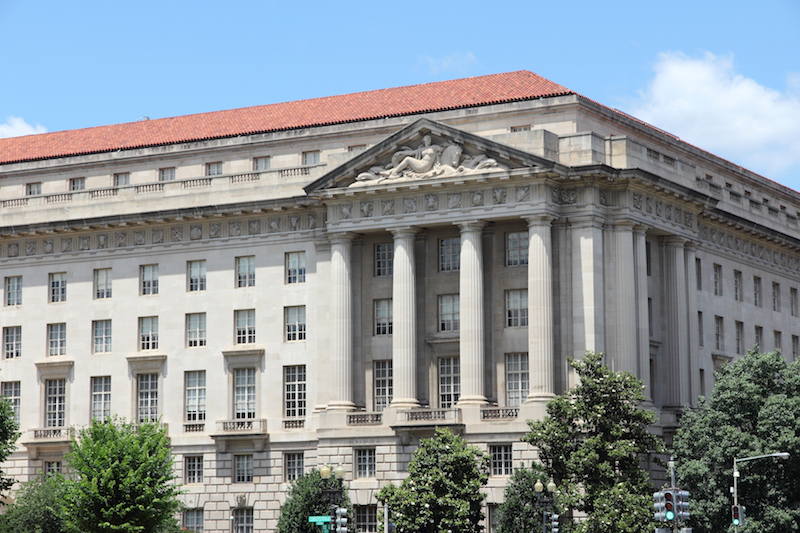
Ideological polarization and regulatory capture have made 2017 a bad year for EPA.
The U.S. Environmental Protection Agency (EPA) is a central instrument of the modern regulatory state. Whether from the perspective of environmental protection or regulatory economics, 2017 has not been a good year.
Experience to date under the Trump Administration is suggestive of industry capture or reflexive ideological opposition to regulation—or both. A multitude of deregulatory actions have occurred. Unfortunately, nearly all of the traditional sources of checks on political leadership—centralized regulatory review, internal agency checks, and congressional oversight —apparently have been neutered or captured. Only the courts, which as yet have not had occasion to play a major role, seem to remain as potential restraints. Let us take each of the nonjudicial checks in turn to see their weaknesses over the last year.
Centralized regulatory review. According to the White House’s annual regulatory report, the Trump Administration withdrew or delayed 1,579 planned regulatory actions. For EPA, the Administration reported only one regulatory action in 2017 (regulating toxic materials used by dentists) and sixteen deregulatory actions. The “regulatory budget” caps for 2018 are all zero, meaning that agencies will be unable to issue new regulations, regardless of benefits, without repealing old regulations of equal or sometimes much greater industry cost. The majority of EPA’s planned actions for 2018 involve contractions of existing regulatory obligations.
Minimization of compliance costs looms ever larger on the government’s agenda, as evidenced by President Donald J. Trump’s executive order implementing a 1-in-2-out regulatory reduction requirement and draconian caps on compliance costs. The 2017 regulatory plan by the Office of Information and Regulatory Affairs (OIRA), a White House office formerly focused on cost-benefit analysis, barely mentions regulatory benefits, and instead focuses almost exclusively on regulatory costs. In the introduction to its 2017 regulatory plan, OIRA emphasizes that: “This Fall 2017 Regulatory Plan reflects a fundamental shift. The Trump Administration recognizes that excessive and unnecessary federal regulations limit individual freedom and suppress the innovation and entrepreneurship that make America great.”
I have found no reports of instances in which OIRA pushed back against a deregulatory action because of a regulation’s net benefits.
Critics have always argued that OIRA’s real mission is protection of industry, not maximizing net economic benefits. Whether that was true in the past, OIRA seems to have moved in that direction under Trump. Under Trump’s 1-in-2-out executive order, benefits generally emerge as a consideration only after a regulation satisfies the primary cost-reduction screens. Consistent with the diminished role of regulatory benefits, there have been vocal complaints from mainstream economists about EPA’s understatement of benefits in key climate change and water pollution actions. Thus, there is reason to question whether OIRA currently views its primary function as promoting rigorous economic analysis or instead just as championing deregulatory outcomes. In any event, cost-benefit analysis seems inoperative as an effective component of decision making.
Internal Agency Checks. Peer review provides an avenue for expert input from independent sources. EPA Administrator Scott Pruitt has eliminated scientists whose work receives government grants from EPA’s science boards because of a supposed conflict of interest, while replacing them with industry scientists.
Career professionals within EPA have also been unable to provide independent expertise or defend the agency’s statutory mission. As one retired senior staffer explained, “Under previous administrations, Republican and Democratic alike,…staffers could make their case to agency leaders, presenting the scientific evidence behind rule-making proposals and other regulatory decisions.” But under this Administration, staff professionals are reported to have little influence, if they are consulted at all. Not surprising, the press reports a “wave of departures” from the agency, including many scientists.
Given the current EPA leadership’s poor relationship with professional staff, developing an adequate administrative record—which is typically needed for an agency’s action to hold up in court, if challenged—will present difficulties for any action involving complex technical issues. EPA has been able to avoid heavy reliance on staff because of its deregulatory strategy. In seeking to repeal the most important Obama era rules—the Clean Power Plan (carbon emissions) and the Water of the United States rule (wetlands and streams)—EPA has relied on purely legal arguments or process-related claims such as the need for further deliberation, rather than on fact-intensive policy determinations. Such rationales require less extensive involvement by staff.
A strong voice for agency or academic experts would be especially desirable given that Pruitt’s outside contacts are also lopsided. His appointment calendars for a six-month period reportedly show that:
Pruitt hears overwhelmingly from industry. He was scheduled to meet 154 times during the period with officials from companies such as ExxonMobil and trade associations such as the American Petroleum Institute…. Those same calendars indicate he saw only three groups representing environmental or public-health interests, though an EPA press release says he met with two others.
Congress. Pruitt testified at some appropriations hearings, and his request for a massive budget cut fortunately went unheeded last year. But he only appeared at one oversight hearing during Trump’s first year, when he testified before the House energy subcommittee about EPA’s agenda on December 7, 2017. In contrast, Obama’s first EPA head testified nine times in Obama’s first year, not counting appearances before appropriations committees.
The main area of congressional pushback has involved biofuels, where Republicans from Midwest farm states have an interest in blocking deregulatory efforts in order to maintain the market for corn ethanol. Congress’s overall passivity seems predictable in the context of unified government and ideologically polarized parties.
The courts. The role of the courts has not yet been really tested. The U.S. Court of Appeals for the District of Columbia Circuit rejected the effort to delay one regulation, finding it to be a flagrant statutory violation. Otherwise, major Pruitt initiatives are still awaiting completion.
Ironically, given EPA’s heavy reliance on statutory arguments for repealing rules, it may have to rely heavily on the Chevron doctrine—which provides that courts should give deference to agencies’ reasonable interpretations of ambiguous statutes, but which is frequently reviled by conservatives. It remains to be seen how rigorously courts will review EPA deregulatory actions. At this point, however, they seem to be the only possible source of restraint on the Administration’s agenda.
EPA deals with high-profile issues, and White House policy preferences inevitably play a powerful role. Under previous presidents, however, there were some countervailing forces such as the role of professional staff at EPA, intervention by economists at OIRA and elsewhere, and congressional oversight. The weakness of these mechanisms under the Trump Administration seems to reflect a combination of industry capture, ideological polarization, unified government, and eroding norms regarding expertise. Absent a major political shift or pushback from the courts, it seems likely this situation will continue.
This essay is part of a seven-part series, entitled Regulation in the Trump Administration’s First Year.




